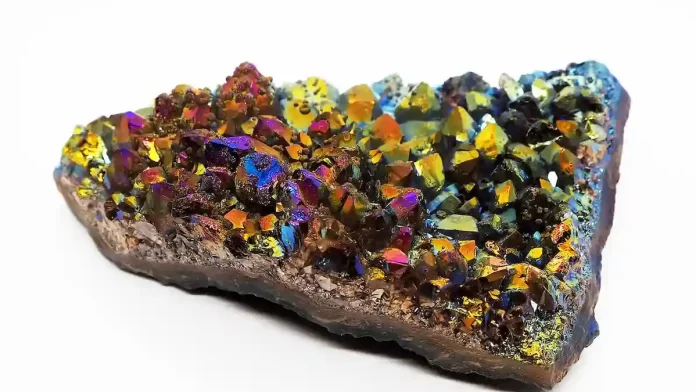Earth’s vast treasure trove of minerals never ceases to amaze scientists and industries alike. Among the abundant minerals, Ilmenite and Rutile hold a special place due to their significant titanium content.
These two minerals, with their unique properties and diverse applications, play a vital role in various industrial sectors.
In this article, we will delve into the fascinating world of Ilmenite and Rutile, exploring their composition, occurrence, uses, and their importance in shaping modern technologies.
Ilmenite: The Titanium-Iron Oxide
Composition: Ilmenite is a titanium-iron oxide mineral with the chemical formula FeTiO3. It consists of iron, titanium, and oxygen atoms, giving it a distinctive black to steel-grey appearance.
Occurrence: Ilmenite can be found in a variety of geological settings. It occurs in igneous rocks like gabbro and basalt, as well as in metamorphic rocks. Additionally, it is commonly associated with other heavy minerals in beach sands, forming rich placer deposits in coastal dunes.
Location: Ilmenite deposits can be found in various countries across the globe. Some of the significant occurrences are found in Australia, India, China, Ukraine, and the United States.
Uses: The commercial value of Ilmenite lies in its titanium content. Titanium, a lustrous and strong metal, is renowned for its excellent strength-to-weight ratio, corrosion resistance, and high melting point. As a result, Ilmenite serves as a crucial source of titanium for numerous industrial applications.
Significance: Titanium derived from Ilmenite is widely used in the aerospace industry, where its lightweight and high strength make it an ideal material for aircraft parts, spacecraft, and missiles. Furthermore, titanium is a key component in the production of high-performance alloys, which find applications in industries ranging from automotive and medical to military and sports equipment.
Interesting Fact: Ilmenite is named after the Ilmen Mountains in Russia, where it was first discovered in the early 19th century. Nettles contain up to 80 parts per million of titanium
Rutile: The Titanium Dioxide Mineral
Composition: Rutile is a titanium dioxide mineral with the chemical formula TiO2. Comprising of titanium and oxygen atoms, it forms beautiful reddish-brown to black crystals.
Occurrence: Rutile is commonly found in metamorphic and igneous rocks. It often occurs with other minerals such as ilmenite and zircon.
Location: Rutile deposits are widespread and can be found in several countries, including Australia, South Africa, India, Sri Lanka, Brazil, and Sierra Leone.
Uses: The primary significance of Rutile lies in its titanium dioxide content. Titanium dioxide is a valuable white pigment, widely used in industries such as paint, plastics, paper, and ceramics. It imparts brightness and opacity to these products, making them more visually appealing.
Significance: The high refractive index and exceptional light-scattering ability of titanium dioxide make it an indispensable element in the production of paints, coatings, and inks. It enhances the coverage and brightness of these products, contributing to their quality and durability.
Interesting Fact: The red and brown varieties of rutile are highly prized as gemstones and are known as “rutilated quartz.” These gemstones are renowned for their unique needle-like inclusions that create striking patterns within the crystal.
Conclusion
Ilmenite and Rutile are captivating minerals with rich titanium content, making them valuable resources for various industrial applications.
Titanium, with its exceptional properties, has revolutionized industries, from aerospace to paint manufacturing.
As our knowledge and understanding of these minerals deepen, so too does their significance in shaping modern technologies and enhancing human life.
Sustainable and responsible mining practices are vital to ensure the availability and conservation of these precious minerals, ensuring their continued contribution to the advancement of our world.
